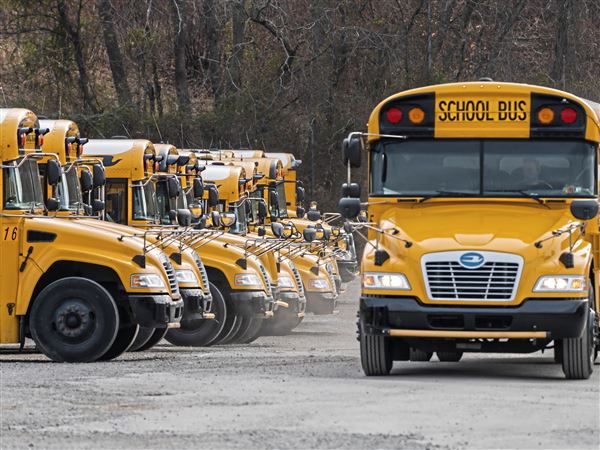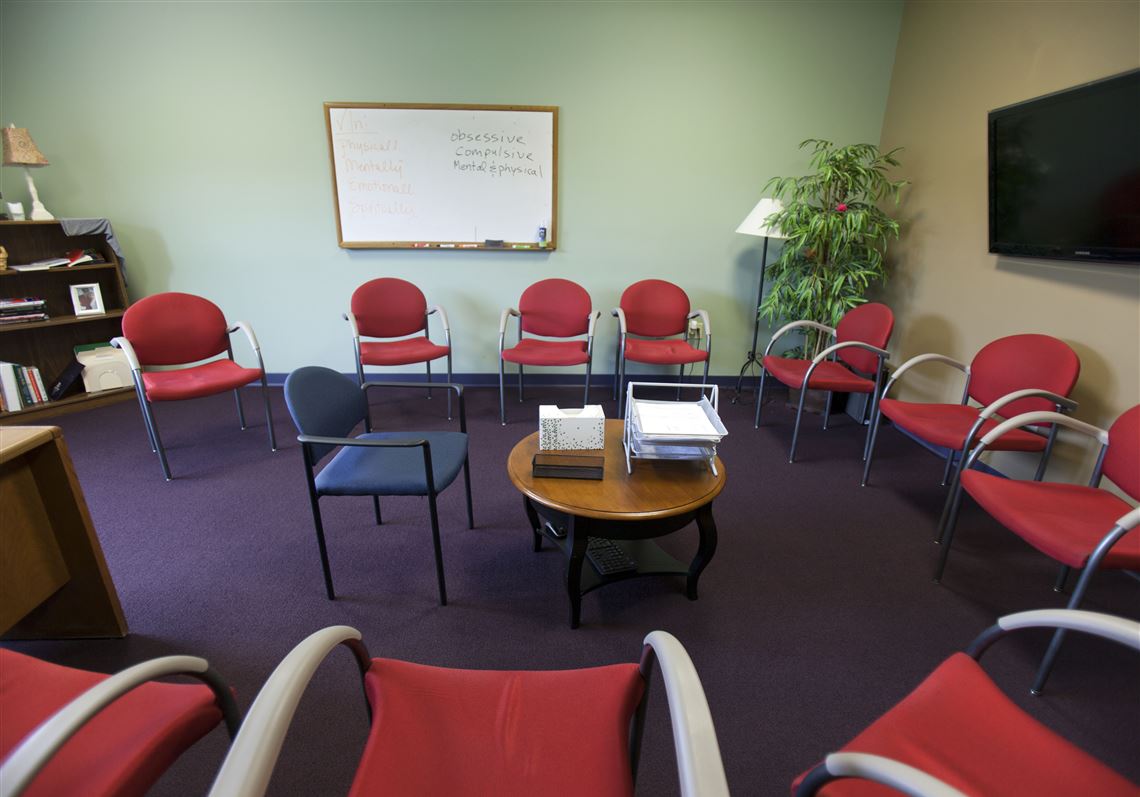Three-quarter-way houses are meant to be a bridge to independent living for addicts, but critics calling for tougher state oversight say some are so crowded, unsupervised and unstable that they can hobble the recovery process.
Neither state nor Allegheny County officials have complete tallies of recovery homes, also known as three-quarter-way or sober-living homes. But market observers believe the housing has proliferated over the last several years amid the opioid epidemic, bringing in short-term tenants after they leave drug court, licensed halfway houses or other care. There are almost no regulations for these homes other than zoning limitations on how many unrelated people can occupy a residence. Some have house managers, mandatory drug testing and other requirements, while others leave tenants to their own devices.
Among hundreds of recovery homes thought to operate in Pennsylvania, a number offer virtually no support to their residents, according to addiction experts and neighborhood watchdogs. Pittsburgh City Council has urged state lawmakers to regulate the residences. Councilwoman Natalia Rudiak said the group homes have been a problem in her district, which includes Carrick, Brookline and Beechview.
“They are simply warehousing those who are struggling with addiction and trying to remain sober,” Ms. Rudiak said of troubled recovery homes with few amenities. She said tenants arriving there from more structured halfway houses are “basically entering a free-for-all” by comparison.
William Davison, 28, of Allentown lived in a recovery home in Ms. Rudiak’s district about three years ago. He said that five recovering addicts shared a single bathroom in the Brookline home, where a house manager left to watch over another home, he said. [A property operator identified by Mr. Davison reported no immediate recollection of his having been a tenant.]
“Some people started using [drugs] in the house here and there,” said Mr. Davison, a recovering heroin addict. He said he “lasted about four months — and then I started using again.”
His friend Gus DiRenna, 57, who works with addicts, said some operators may fit more than a dozen people into a three- or four-bedroom home. Monthly prices typically run about $450 apiece, at times delivering fat profits for those property owners who skimp on tenant services, Mr. DiRenna said.
The time when recovering addicts leave the structure of inpatient centers or halfway houses is often a make-or-break period, he said. A poorly managed three-quarter-way home can undermine months of progress.
“At that point, I think, is where you make the difference to keep these kids alive. That’s where we’re losing them,” said Mr. DiRenna, of Whitehall. “We’re not losing them in the treatment centers. We’re not losing them in the detoxes. It’s right afterwards, when they get out of those places and it’s time to start over.”
Allegheny County recorded at least 300 drug overdose deaths through November, according to OverdoseFreePA.org.
Mr. DiRenna advocated eliminating the profit motive for operators of recovery homes. A state certification program, he said, could set minimum standards for many facilities, along with a mechanism to gauge — and perhaps reward — their successes.
To that end, two recent state bills would establish baseline requirements for recovery homes that receive federal or state support. State Rep. Tina Davis, a Bucks County Democrat, said she will reintroduce her legislation this year.
Among its provisions, the measure would require background checks for the affected recovery home owners, sobriety for their house managers and a rule book for their operations.
“I live with it every day,” said Ms. Davis, who reported frequent complaints about the facilities.
Another effort could produce regulations from the state Department of Drug and Alcohol Programs, or DDAP, by early 2017, said Carol Gifford, a spokeswoman for the agency. It’s weighing safety recommendations that a task force issued in July.
The suggestions include drug and alcohol testing for owners, employees and operators of recovery homes. Those workers also should not involve themselves romantically with residents, should not pay commissions to encourage referrals from health care providers and should not provide therapeutic interventions unless they’re licensed to do so, according to the recommendations.
Additionally, the task force suggested that major appliances and utilities be in good condition and that any crimes, deaths or overdoses be reported to the state. The standards would apply only to those recovery homes certified to receive state money or referrals from state-licensed treatment programs.
At the nonprofit Recovery United Pittsburgh, president John Miller said such regulations are necessary. While his group recovery homes follow internal rules such as curfews and drug tests, he said, other outfits have essentially no structure.
He expects state regulations could put many out of business. But the facilities are not a cure-all, Mr. Miller said.
“It’s up to the person who’s trying to get their life together to fix themselves,” he said. “It’d be great if they came in, and I waved a wand and said, ‘You’re done; you’re cured.’ Unfortunately, that’s not what happens.”
A relative handful of recovery homes in Pennsylvania already face review. State drug officials estimate that more than 50 are contracted at the county level. Inspections are mandatory for those that receive state money, according to the DDAP.
Allegheny County contracts with two recovery housing providers, each monitored every year. And the Philadelphia-based Pennsylvania Association of Recovery Residences has certified around 150 homes through its own process, largely in eastern Pennsylvania.
Taken together, the dwellings represent a fraction of the 800 to 1,000 recovery homes estimated statewide by Fred Way, the association’s executive director. He figured around 1 in 12 of the home operators is a bad actor.
Most are helping people, said Mr. Way, who served on the DDAP task force.
“It’s about being holistic with their recovery and making them better men and women,” he said. He supports making independent bodies, such as his association, responsible for issuing state-recognized certifications.
Back in Western Pennsylvania, recovery-home owner Leo Hutchison is working to form a regional chapter of the state recovery residence association. He got into the business after seeing unscrupulous practices elsewhere in the field, he said.
His residents in Beechview and Carrick must show progress in a 12-step recovery program, among other expectations. Though he follows other guidelines, such as stocking fire extinguishers and allowing a specific number of beds per square foot, he’s heard of other facilities that are more lax.
“I don’t know if they’re going to want to stay in this business,” Mr. Hutchison said, “with less of a profit margin.”
Staff writer Kate Giammarise contributed. Adam Smeltz: asmeltz@post-gazette.com. Molly Born: mborn@post-gazette.com.
First Published: January 3, 2017, 5:00 a.m.















